

The economics of space sustainability (page 1) By Brian WeedenMonday, June 4, 2012 Over the last several years, the long-term sustainable use of outer space, specifically Earth orbit, has emerged as a significant public policy issue in the United States and among many spacefaring nations.
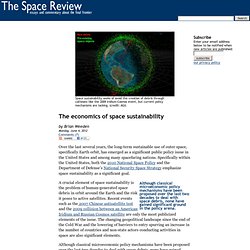
Specifically within the United States, both the 2010 National Space Policy and the Department of Defense’s National Security Space Strategy emphasize space sustainability as a significant goal. A crucial element of space sustainability is the problem of human-generated space debris in orbit around the Earth and the risk it poses to active satellites. Recent events such as the 2007 Chinese antisatellite test and the 2009 collision between an American Iridium and Russian Cosmos satellite are only the most publicized elements of the issue. Although classical microeconomic policy mechanisms have been proposed over the last two decades to deal with space debris, none have gained significant ground in the policy arena. Asteroid Mining Comparable to Deep-Sea Drilling, Advocates Say.
A newly unveiled firm's asteroid-mining plans may be ambitious, but they're not any crazier than some extractive operations already under way here on Earth, company officials say.

The billionaire-backed Planetary Resources, Inc. announced Tuesday (April 24) that it hopes to mine near-Earth asteroids for water and precious metals, with the dual aims of making a tidy profit and helping open the final frontier to further exploration and exploitation. Asteroid mining promises to be a multidecade effort requiring many billions of dollars of investment.
But in that respect — and in the technological challenges that must be overcome — it's similar to deep-sea oil drilling, said Planetary Resources co-founder and co-chairman Peter Diamandis. "They've literally created robotic cities on the bottom of the ocean, 5, 10 thousand feet below the ocean's surface — fully robotic cities that then mine 5 to 10 thousand feet down below the ocean floor to gain access to oil," Diamandis said Tuesday. Uniting the Planet for a Journey to Another Star. — It has been confirmed that a multi-partner group of interstellar enthusiasts was awarded funding under DARPA's 100 Year Starship Program. — Ex-NASA astronaut Mae Jemison will head the project, with the goal of making interstellar travel an inclusive endeavor.
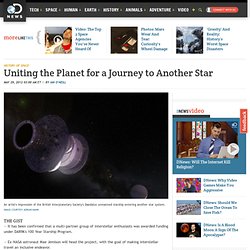
Commercial rocket carries supplies to space station. Asteroid Introduction. Asteroid Introduction The future cannot be predicted, but futures can be invented. - Dennis Gabor Asteroids are rocky and metallic objects that orbit the Sun but are too small to be considered planets.

They are known as minor planets. Asteroids range in size from Ceres, which has a diameter of about 1000 km, down to the size of pebbles. Planetary Systems. Near Earth Objects Map. The image below is an up to date map of the solar system displaying the orbits of the terrestrial planets and the estimated position of thousands of known asteroids.

This diagram is missing comets, space probes and, of course, the undiscovered asteroids. Even conservative estimates would suggest that for every asteroid on a dangerous Earth-Approaching orbit there are hundreds more which have yet to be discovered. Neostorm.png (PNG Image, 1002 × 1002 pixels) Local.png (PNG Image, 982 × 982 pixels) Space Studies Institute. The Space Studies Institute (SSI) grew out of the interest generated by Gerard K.
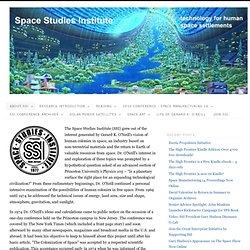
O’Neill’s vision of human colonies in space, an industry based on non-terrestrial materials and the return to Earth of valuable resources from space. Dr. O’Neill’s interest in and exploration of these topics was prompted by a hypothetical question asked of an advanced section of Princeton University’s Physics 103 – “Is a planetary surface the right place for an expanding technological civilization?” From these rudimentary beginnings, Dr. O’Neill continued a personal intensive examination of the possibilities of human colonies in free space.
In 1974 Dr. In the following year, a much larger conference was held in cooperation with Princeton University and the American Institute of Aeronautics and Astronautics. By late 1974, the healthy and vigorous National Aeronautics and Space Administration supported O’Neill’s research efforts with a small grant. How Asteroid Mining Will Work" If you enjoy science fiction, then you know that the thought of colonizing the moon makes for some incredibly imaginative stories.

But there is a good possibility that lunar cities will become a reality during the 21st century! Colonizing Mars is another option as well. Untitled. Asteroids (from the NEAR press kit) Asteroids are metallic, rocky bodies without atmospheres that orbit the Sun but are too small to be classified as planets.

Known as "minor planets," tens of thousands of asteroids congregate in the so-called main asteroid belt: a vast, doughnut-shaped ring located between the orbits of Mars and Jupiter from approximately 2 to 4 AU (186 million to 370 million miles/300 million to 600 million kilometers). Gaspra and Ida are main belt asteroids. Asteroids are thought to be primordial material prevented by Jupiter's strong gravity from accreting into a planet-sized body when the solar system was born 4.6 billion years ago. Asteroids. Asteroids Near Earth Overview. What are "Near Earth Asteroids"?
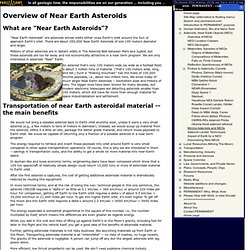
"Near Earth Asteroids" are asteroids whose orbits either cross Earth's orbit around the Sun or approach Earth's orbit. There are about 200,000 Near Earth Asteroids of size 100 meters diameter and larger. Millions of other asteroids are in distant orbits in The Asteroid Belt between Mars and Jupiter, but these asteroids are too far away and not economically attractive in a near term program. Asteroids, comets, meteors, and moons. Asteroid mining 2006. Center for Space Resources. 8th Continent Project.
What is the 8th Continent Project?
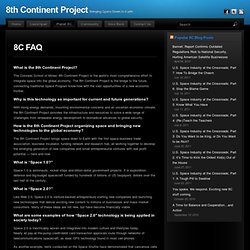
The Colorado School of Mines’ 8th Continent Project is the world’s most comprehensive effort to integrate space into the global economy. The 8th Continent Project is the bridge to the future, connecting traditional Space Program know-how with the vast opportunities of a new economic frontier. Why is this technology so important for current and future generations? With rising energy demands, mounting environmental concerns and an uncertain economic climate, the 8th Continent Project provides the infrastructure and resources to solve a wide range of challenges from renewable energy development to biomedical advances to global security.
Quantitative Mineralogy. Lunar and Planetary Laboratory. Professor Emeritus Cosmochemistry & planetary atmospheres Ph.D., 1968, California, San Diego jsl@lpl.arizona.edu at lpl David Grinspoon, 1988 (PTYS) Melinda Hutson, 1996 (PTYS) Thomas Jones, 1988 (PTYS) Jeffrey Kargel, 1990 (PTYS) More about Dr. Professor Lewis has research interests in two distinct areas: applications of chemistry to planetary sciences, and space development. The World of John S. Lewis. Technical Reports Server - Asteroid Exploration and Exploitation. John Lewis bio and "Asteroid exloration & exploitation" slides. Asteroid_Retrieval_Feasibility_Study_2012. New Study Says Asteroid Retrieval and Mining Feasible With Existing and Near-Term Technologies at Parabolic Arc. Illustration of an asteroid retrieval spacecraft in the process of capturing a 7-m, 500-ton asteroid.
(Image Credit: Rick Sternbach / KISS) By Douglas MessierParabolic Arc Managing Editor A new study sponsored by the Keck Institute for Space Studies (KISS) has concluded that it would be possible to return an asteroid weighing approximately 500 metric tons to high lunar orbit where it would be mined for resources by 2025. The Asteroid Retrieval Feasibility Study, published on April 2, was prepared for KISS, NASA Jet Propulsion Laboratory, and the California Institute of Technology (Caltech). The Asteroid Mining Company – Technology. There are no roads where we’re headed. But we have a map. Our Philosophy Planetary Resources’ near-term goals are to dramatically reduce the cost of asteroid exploration.
We will combine the best practices of commercial aerospace innovation, operational adaptability, and rapid manufacturing to create robotic explorers that cost an order of magnitude less than current systems. We will control costs by constraining scope and creating simple designs that can be executed by a small, expert team. Planetary Resources set to begin hunt for asteroids to mine in 18-24 months. Some time in the next 18 to 24 months, Planetary Resources, Inc. will launch a series of mass-produced 9" space telescopes, dubbed Arkyd Series 100 spacecraft. They're specifically designed to identify which of the roughly 8,900 near-Earth asteroids are both smaller than 50 meters and suitable targets for retrieval back to Earth orbit. These small near-Earth asteroids represent a transient population, with life spans in the millions of years, typically cut short by running into a planet or being thrown out of the solar system by Jupiter.
That mission, according to Planetary Resources co-founder Eric Anderson, will be completed well enough within the ensuing year or two that the follow-up spacecraft, the Arkyd Series 200, can track some of these asteroids as they fly by in high Earth orbit. Still later, Arkyd Series 300 swarm spacecraft can begin launching to survey those asteroids from a closer perspective, gathering information on spin, shape, and composition. Asteroid takeout—a one-billionaire mission to bring a 500-ton asteroid to Earth by 2025.
Business in Outer Space Getting Underway. Futurist Foresight. Space Resources: Re-igniting a can-do spirit of ambition. It appears that a small cabal of the Good Billionaires -- those who got rich through innovation and who feel loyal to the future -- are about to to fund a new effort worth some excitement and attention. It aims at transforming not just our Earth -- but the whole solar system. And, along the way, this endeavor may help bootstrap us back into our natural condition... a species, nation and civilization that believes (again) in can-do ambition. Mining the sky. Energy and Space.